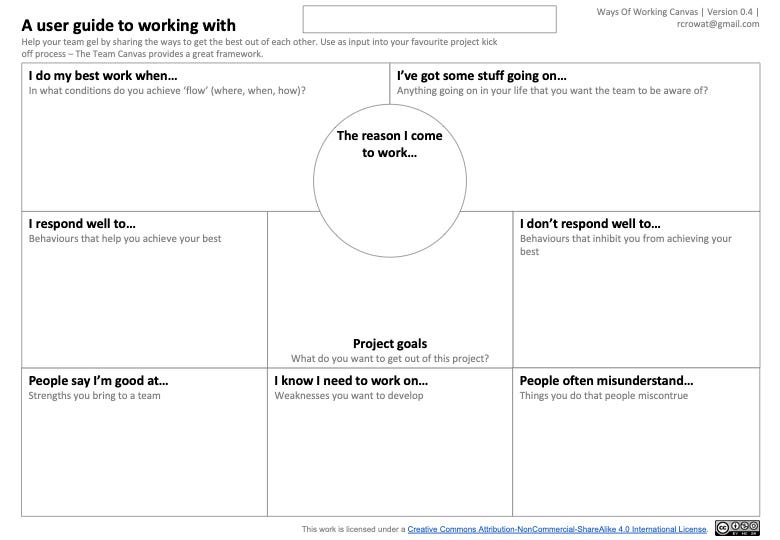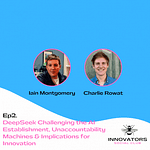We started this conversation with a seemingly simple question.
“How do you hire for innovation?”
This doesn’t seem to get talked about much. Maybe because a lot of the time when it works, it’s so contextual or happened so organically, it’s difficult to distil the reasons that led to success.
But having worked in growing consulting businesses, run countless projects and built internal teams for clients, there’s a few things we’ve noticed for what works well and what tends to be a bit of a warning sign.
We’ve also made a few errors when hiring, and come up against some of the usual corporate roadblocks for innovation. In fact, the way you hire can be one of those blockers. Hiring for innovation should be a little bit innovative right?
Deep Expertise vs. Fresh Perspective
One of the biggest hiring debates for innovation is whether you bring in people with deep industry knowledge or fresh eyes from the outside. Do you want the person who knows the history, jargon, process and all the reasons why things are the way they are? Or do you want the person who walks in and says, “Hang on, this makes no sense, I’d do this totally differently?”
It’s a false dichotomy. You need both. Maybe that’s obvious.
But then most corporate hiring defaults to deep expertise. They want people who “fit the role”, have 15+ years of direct industry experience, people who can hit the ground running because they’ve followed the career ladder. And that’s usually pretty reasonable for an operations or functional role. If you’re doing FP&A for an airline, it helps that you’ve got some accounting chops while also understanding the aviation business models.
For an innovation team though, you need people who are comfortable challenging the status quo, questioning lots of assumptions and bringing some diverse external experiences from other industries or cultures. Too much deep expertise can be a bit of a blocker, the folks that get so caught up in “this is how we do things round here” that they stop questioning whether those things should be done at all.
So you need the combinations. A bit like the guy who spent 20-something years working in banking and then left to start a fintech, because he saw all the problems from the inside and applied it in stepping out of his corporate bubble. He wasn’t your typical startup founder, not particularly young and techy, nor did he like hoodies, but he had the deep knowledge of industry and the fresh perspective of a founder.
Corporates have expertise in spades, so it makes sense to staff the innovation function with interesting experience combined with a bit of rebellious curiosity. People who do their diligence in understanding the systems, but aren’t afraid to question or challenge them.
Hiring Processes is Built for Safety, Not Innovation
The corporate hiring process is almost entirely designed to avoid ‘bad’ hires, rather than maximise the chance of a finding ‘great’ ones. It generally does a decent job of weeding out time-wasters, blaggers and incompetents … but in the process throws out a lot of the wildcards.
That’s a big problem for innovation. If you’re trying to do something new, you need to take some risks. But companies run into issues when they don’t keep that in mind during the hiring process, especially when HR (employing AI screening) has the first filter. Years of experience, direct industrial knowledge, working in a similar role, and linear career paths are nowhere near as relevant for innovation roles.
The irony is if most successful startup founders or creatives went through the corporate recruitment systems, they’d never get the job. The best people for these roles tend to have weird backgrounds, unconventional career paths, or skills that don’t fit neatly into a job description. But that’s exactly what makes them useful.
We talked a bit about how in advertising, creative directors would often skip past the “official” portfolio work and go straight to someone’s side projects, because that’s where you see what they’re really interested in and get a feel for their personality. What makes them interesting, what are they passionate about, what are they playing with? If that’s a good fit, bring them in, even if the don’t check the official boxes.
So maybe the rule here is: hire for curiosity, not compliance. Look for people who are already experimenting, questioning and building things outside of their day jobs.
Mindset Beats Skillset Every Time
We kept coming back to this. Innovation isn’t about hiring for specific skills, it’s about hiring for mindset. The skills can be learned. The mindset is much harder to instil, and often self taught.
We did identify how the best innovation hires tend to share a few key traits though:
Comfort with ambiguity: Can they handle not having all the answers and figuring it out as they go.
Resilience: Do they know that failure is part of the process and not let it derail them.
Curiosity: Are they asking great questions that push beyond the obvious, and likely wandering off down a few side trails.
Hustle: Do they wait for permission or are they more likely to just starts testing something?
A nice example of this in the UK are Teach First grads (the program that sends young teachers into typically tough schools). They often end up great hires because they’ve spent two years dealing with chaos, working with limited resources and figuring out how to get stuff done in an unpredictable environment. That’s a great training ground for innovation.
The other thing we realised is that this mindset shouldn’t just be for junior hires. If the senior person running the innovation team doesn’t have it, the whole thing falls apart. You need leadership that’s comfortable taking risks and letting things play out, otherwise they’ll just kill off good ideas before they have a chance to go anywhere.
While we’d rather not divide into the terms like junior or senior, it’s interesting our conversation kept going back towards those earlier in their careers, perhaps as being a bit more malleable for innovation roles.
Why We Should Be Hiring Teams, Not Just Individuals
One of the biggest mistakes companies make is hiring for the individual, rather than the team collective. When you hire for individual, direct, scripted roles then you tend to be more risk averse. But when you hire for teams, where the roles might be less rigid, then you can be more creative. Say you’re hiring 3 or 4 people at the same time, it gives you more leeway to say: “Well she wasn’t quite what we were looking for, but y’know what? There’s something there, let’s take a punt!”
A slight aside, but it’s worth noting that advertising agencies hire creatives in ready made teams of two, traditionally copywriter and art director.
This also got us talking about the nucleus of what typically makes an innovation project team (with a bit of a bias for consultancy here). You’ll usually find the roles of designers, strategists, researchers and project managers. In digital, throw in some developers or product managers too. It’s a good mix, and not a wrong one, and it often works best when the team can play multiple positions too.
But again, we’re back to roles, and really we need a bit more of the mindset approach here. Something that we’ve written about before with the mix of thinkers and traits required for a killer innovation team.
Historians: they how we got here and the context why things are the way they are.
Futurists: they speculate on the future, think about what might (not necessarily will) come next, can spot patterns and hold contrasting versions of the way forward in their mind.
Alchemists: they creatively connect ideas that seemingly don’t go very well together, effectively concocting recipes of insights, ideas, features and experiences with the mind of a marketer.
Number Crunchers: they ground the emotional matters in the logical reasoning required for the rationally minded, making sure the business and investments case is some way structured.
Diplomats (we called them Politicians in the chat, but then came up with a better term): The one who can translate innovation narratives into corporate speak, navigate internal politics and shield the team from the day to day.
Cover these bases in the thinking, working and storytelling and it’s likely innovation work will be rich, creative, considered and compelling.
We all know though, that hiring brilliant individuals isn’t enough. We need to bring them together and help them work as a real team in order to produce work that is beyond any one person’s capability. One tool we make use of with every team we work with is the Ways of Working Canvas. Use it whenever you form a team, or someone joins a team, and you will get more cohesion, faster.

Making Hiring Less Rigid and More Fluid
One last thing we both felt strongly about popped up as we came close to wrapping, is how companies should be rethinking how they bring people in without defaulting to the full-time, permanent hires.
Not all innovation types want the requirement of a full time, day job. Especially with the bureaucracy required to find a job, apply, interview and get hired. Nor with more challenging budgets in a lean environment, do managers want to always commit to that kind of hire. They also often avoid the ones they think might not be in it for the long haul, already dreading the effort of replacing them.
While not a new thing, the comfort with fractional ways of working is gathering pace. Innovation doesn’t always need full time employees but more the right people at the right time. Sometimes that’s a freelancer, a fractional hire, interim, consulting or advisor. Other industries have figured this out, in particularly the film business where teams are assembled for a production, then disbanded, with many then going to the next one together, but others exploring different projects. Innovation teams should probably work more like this: figuring out which aspect of the work will benefit from greater investment, bringing in the right expertise and skills at the right time, and doing this at speed to keep up momentum.
tl;dr to Wrap Up
In the course of an hour or so, we learned and reflected on a few things
Hire less for safety, and more for potential.
Mindset is more important than skillset
Teams work best when they have different types of overlapping, complementary thinkers.
Hiring should be more fluid, bringing in the right people when they’re needed
If companies want to make progress in new ways, then they need to rethink their approach. If you keep hiring the same way, you’ll keep getting the same results.
And you don’t want that, do you?















Share this post